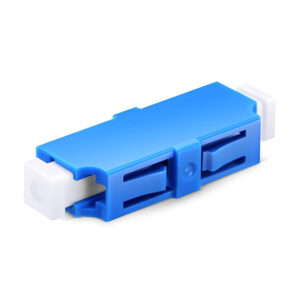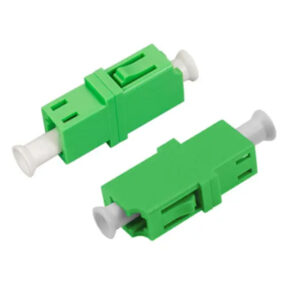
LC/APC Singlemode Duplex Fiber Optic Adapter
- Model:
- Sample:
- Free Sample in Stock
- Time:
- 3 working days
- Made:
- Teleweaver
- From:
- Fiber Optic Adapter
Similar with LC/APC Singlemode Duplex Fiber Optic Adapter for options
Introduction to LC/APC Singlemode Duplex Fiber Optic Adapter
The LC adapter is designed to join the LC connector where a connection or disconnection is required. LC stands for Lucent Connector, as it was first developed by Lucent Technology. Besides, LC can also stand for Little Connector and Local Connector. The LC/APC connector features an angled physical contact (APC) surface on the endface of the connector with a 1.25mm ceramic ferrule to minimize back reflection, making it ideal for high-speed data transmission.
-
High optical performance: The APC design ensures low back reflection, making the adapter ideal for high-speed data transmission.
-
Improved insertion loss: The LC/APC connector has a precision-polished ferrule, resulting in low insertion loss, allowing more light to pass through the connector.
-
Ease of use: The LC/APC connector has a push-pull mechanism, making it easy to connect and disconnect, compared to other fiber optic connectors that require special tools.
-
LC/APC Singlemode Duplex Fiber Optic Adapter Specification
| Parameters | Value |
|---|---|
| Model Number | LC/APC duplex sm adapter without flange |
| Insertion loss | <0.2dB |
| Return loss | > 50dB |
| Durability | > 1000 times |
| Material | PC+ABS |
| Compliance | ROHS/ISO/CE |
| Operating temperature | -25℃~+75℃ |
FAQs on LC/APC Singlemode Duplex Fiber Optic Adapter
When choosing an LC/APC singlemode duplex fiber optic adapter, the following factors should be considered:
-
Compatibility: Ensure the adapter is suitable for singlemode fiber, and for use with LC/APC connectors.
-
Insertion Loss: The insertion loss is the amount of light lost when the signal travels through the adapter. It is important to choose an adapter with low insertion loss to minimize signal loss. Typically, insertion loss should be less than 0.3 dB.
-
Return Loss: Return loss is the amount of light reflected back toward the source. High return loss is desirable because it indicates a good connection and reduces signal interference. Typically, return loss should be greater than 50 dB.
-
Durability: Consider the number of times the adapter will need to be mated and unmated. The adapter should be durable enough to withstand a high number of mating cycles without degradation.
-
Operating Conditions: Consider the operating environment of the adapter, including temperature and humidity. Make sure the adapter is suitable for use in the intended environment.
-
Compliance: Ensure that the adapter complies with relevant industry standards, such as Telcordia GR-326-CORE, IEC 61754-20, and RoHS.









.png)